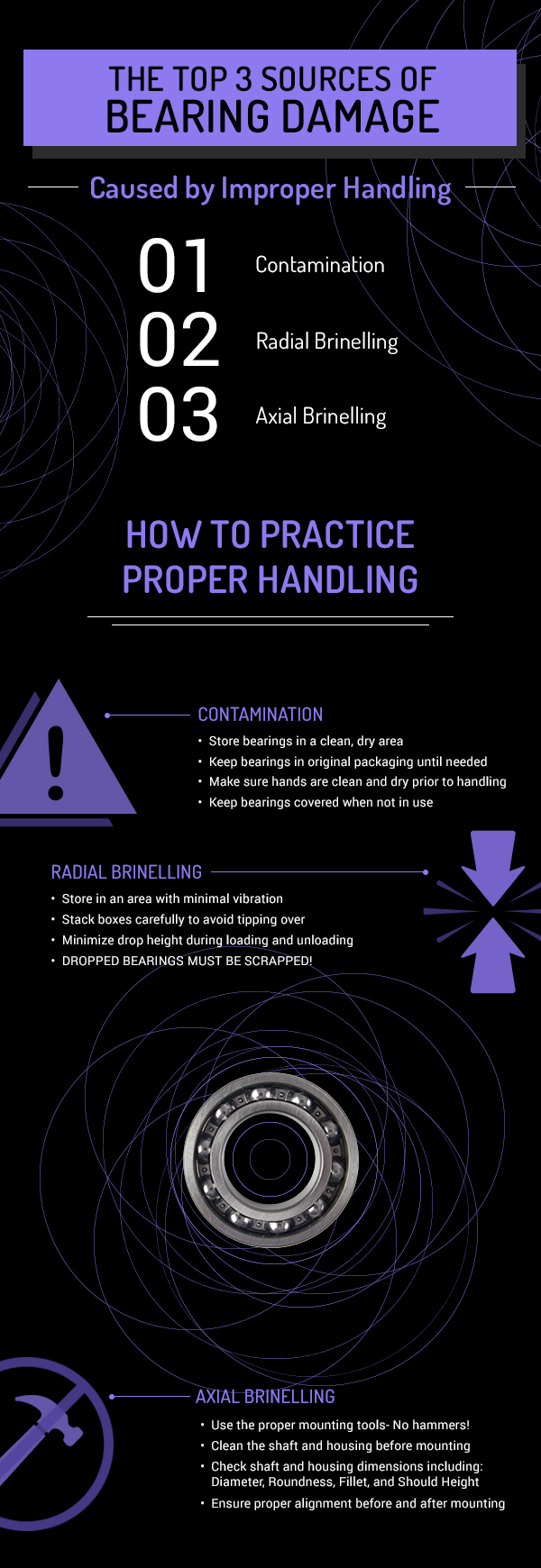Bearing Lubrication 101
Posted March 3, 2016 by adminBearing lubrication may seem like a minimal, last-minute consideration when working on your application, but did you know that a high percentage of bearing failures result simply from issues with lubrication? At VNC, we know the importance of proper bearing lubrication and that’s why we’re going to start with the basics. Welcome to Bearing Lubrication 101.
Why lubricate bearings?
Proper lubrication of bearings will prevent undesirable situations and will help improve your bearings’ overall performance and life expectancy. With the proper lubrication in place, an oil film is created that separates the rolling elements of a bearing (raceways, cages, etc.) so that they do not experience metal to metal contact. This film protects the rolling elements of the bearing from continuous friction which would lead to excessive heat and ultimately, metal fatigue. If there is one thing you do not want your bearings to experience, it’s premature fatigue and failure.
What are my options for lubrication?
When lubricating your bearings, you have the choice between oil and grease. Each has its own pros and cons, but it really depends on your bearing and the circumstance or application that it will be used in. We will explore the characteristics of both oil and grease in our next post, but for now, let’s look at a simple break down of what each is used for.
Oil
Oil is typically used in applications that require extremely low torque or a narrow range of torque variation.
Grease
The life obtained from grease is considerably greater than that of just oil. This is due to the grease’s ability to release oil during use, keeping the oil where it is needed most.
What causes lubrication failure?
The top four most common causes of lubrication failure include
- The lubrication type
- The amount of lubrication used
- Contamination
- Over loading
When lubrication is inadequately applied, surface damage will result. This damage will progress rapidly to failure and unfortunately, these lubrication failures are often difficult to differentiate from fatigue failure. Spalling damage usually destroys the evidence of inadequate lubrication making its diagnoses very challenging.
As you can see, being knowledgeable about lubrication and what type and amount is best for your specific circumstance can mean the difference between bearing’s performance or failure. We want you to experience exceptional bearing performance so that your application does exactly what it needs to do. In our next post we explore oil and grease variations in more depth.
If you have questions about what lubrication to use, contact us today! Our team can help you choose the right type and amount of lubrication for your application.

